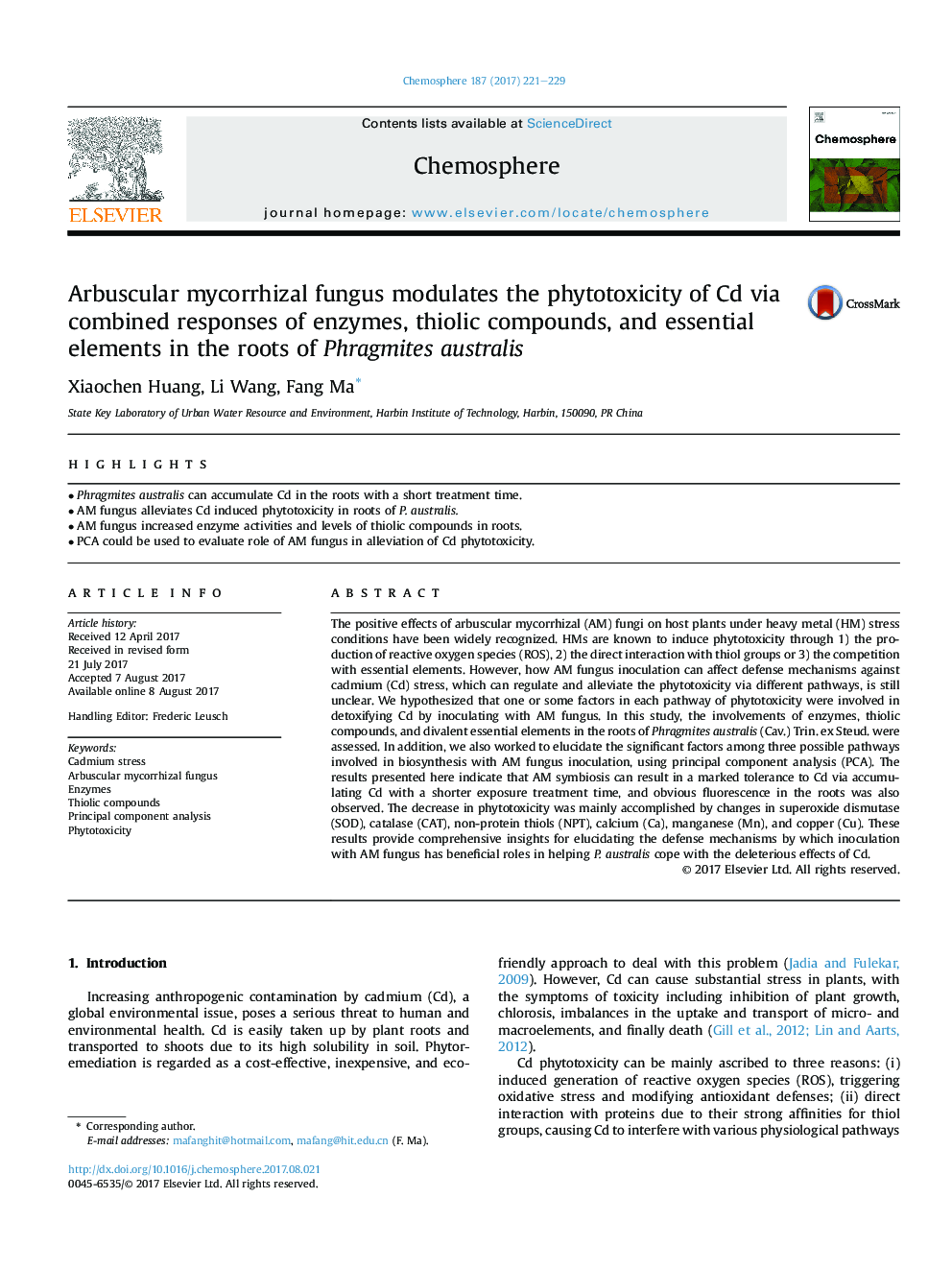| کد مقاله | کد نشریه | سال انتشار | مقاله انگلیسی | نسخه تمام متن |
|---|---|---|---|---|
| 5746438 | 1618784 | 2017 | 9 صفحه PDF | دانلود رایگان |

- Phragmites australis can accumulate Cd in the roots with a short treatment time.
- AM fungus alleviates Cd induced phytotoxicity in roots of P. australis.
- AM fungus increased enzyme activities and levels of thiolic compounds in roots.
- PCA could be used to evaluate role of AM fungus in alleviation of Cd phytotoxicity.
The positive effects of arbuscular mycorrhizal (AM) fungi on host plants under heavy metal (HM) stress conditions have been widely recognized. HMs are known to induce phytotoxicity through 1) the production of reactive oxygen species (ROS), 2) the direct interaction with thiol groups or 3) the competition with essential elements. However, how AM fungus inoculation can affect defense mechanisms against cadmium (Cd) stress, which can regulate and alleviate the phytotoxicity via different pathways, is still unclear. We hypothesized that one or some factors in each pathway of phytotoxicity were involved in detoxifying Cd by inoculating with AM fungus. In this study, the involvements of enzymes, thiolic compounds, and divalent essential elements in the roots of Phragmites australis (Cav.) Trin. ex Steud. were assessed. In addition, we also worked to elucidate the significant factors among three possible pathways involved in biosynthesis with AM fungus inoculation, using principal component analysis (PCA). The results presented here indicate that AM symbiosis can result in a marked tolerance to Cd via accumulating Cd with a shorter exposure treatment time, and obvious fluorescence in the roots was also observed. The decrease in phytotoxicity was mainly accomplished by changes in superoxide dismutase (SOD), catalase (CAT), non-protein thiols (NPT), calcium (Ca), manganese (Mn), and copper (Cu). These results provide comprehensive insights for elucidating the defense mechanisms by which inoculation with AM fungus has beneficial roles in helping P. australis cope with the deleterious effects of Cd.
Journal: Chemosphere - Volume 187, November 2017, Pages 221-229